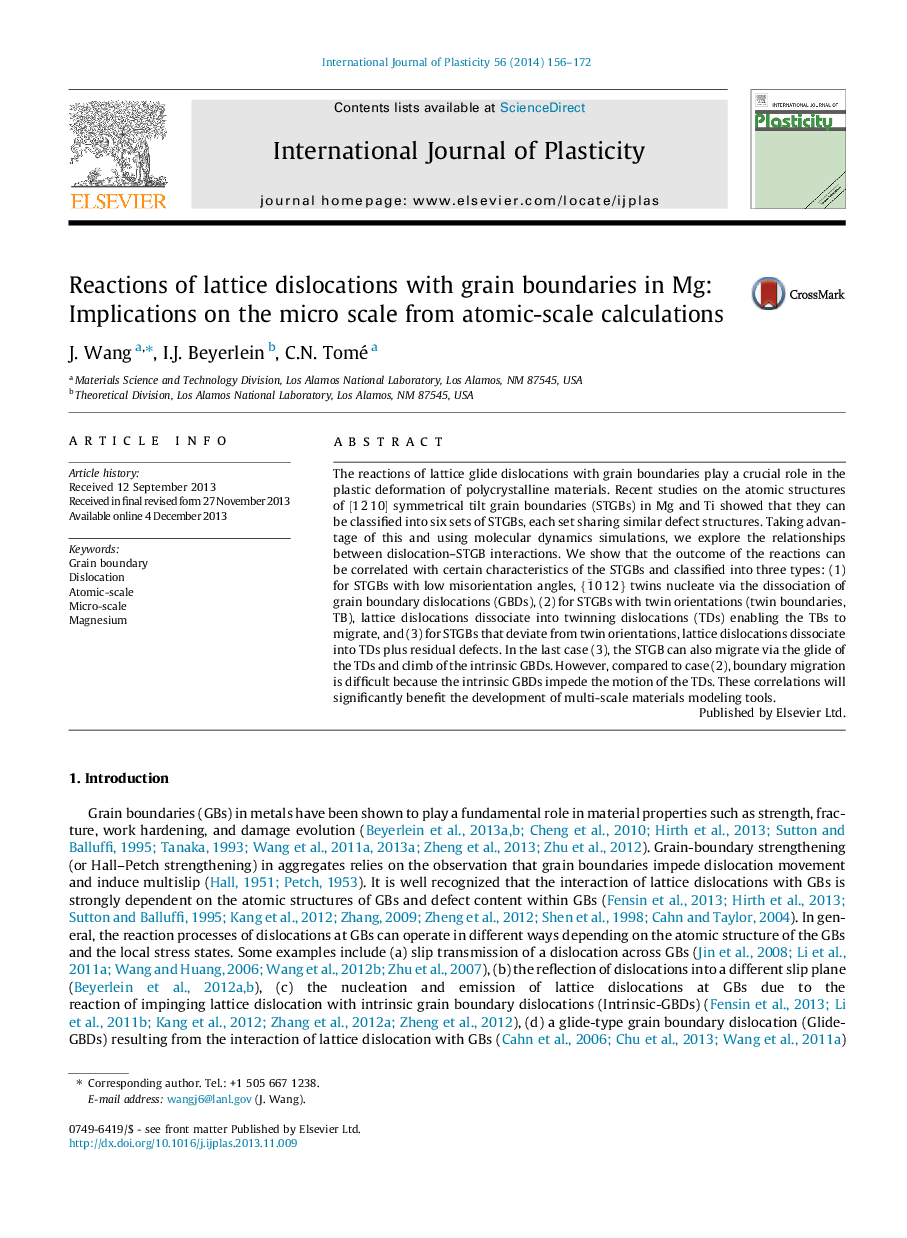| Article ID | Journal | Published Year | Pages | File Type |
|---|---|---|---|---|
| 784397 | International Journal of Plasticity | 2014 | 17 Pages |
•Reactions of dislocations–symmetrical tilt grain boundaries in Mg were studied using atomistic simulations.•Dislocation–STGBs reactions can be classified into three types according to STGBs types.•For STGBs with low misorientation angles, (10–12) twin nucleates.•For STGBs with or close to twin orientations, STGBs migrate and boundary dislocations climb.
The reactions of lattice glide dislocations with grain boundaries play a crucial role in the plastic deformation of polycrystalline materials. Recent studies on the atomic structures of [12¯10] symmetrical tilt grain boundaries (STGBs) in Mg and Ti showed that they can be classified into six sets of STGBs, each set sharing similar defect structures. Taking advantage of this and using molecular dynamics simulations, we explore the relationships between dislocation–STGB interactions. We show that the outcome of the reactions can be correlated with certain characteristics of the STGBs and classified into three types: (1) for STGBs with low misorientation angles, {1¯012} twins nucleate via the dissociation of grain boundary dislocations (GBDs), (2) for STGBs with twin orientations (twin boundaries, TB), lattice dislocations dissociate into twinning dislocations (TDs) enabling the TBs to migrate, and (3) for STGBs that deviate from twin orientations, lattice dislocations dissociate into TDs plus residual defects. In the last case (3), the STGB can also migrate via the glide of the TDs and climb of the intrinsic GBDs. However, compared to case (2), boundary migration is difficult because the intrinsic GBDs impede the motion of the TDs. These correlations will significantly benefit the development of multi-scale materials modeling tools.
